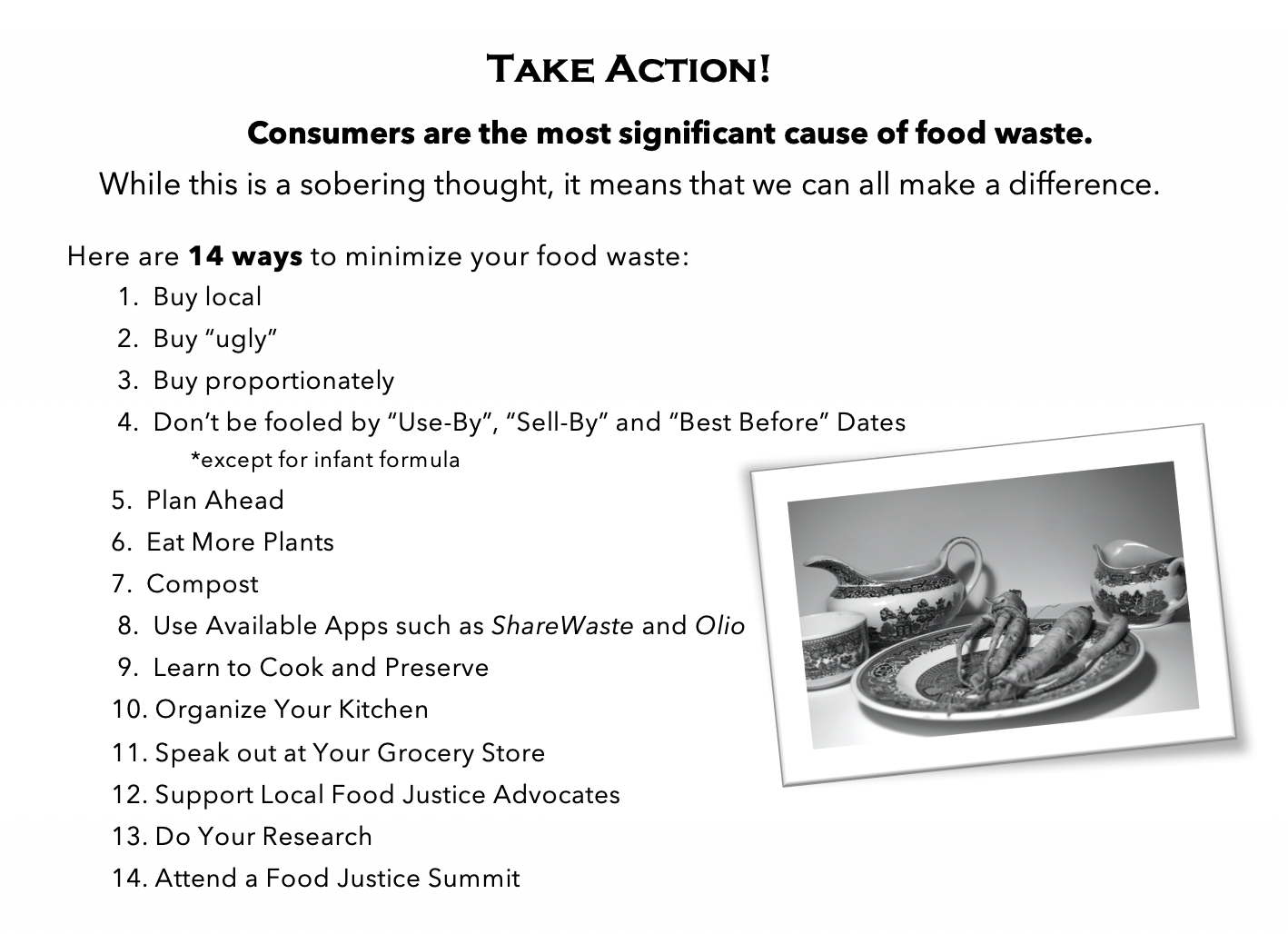
My photography project on food waste in the Adirondacks, titled, “Inefficient”, was featured at the Adirondack Food Justice Summit in 2019. This project serves to educate the community through visual awareness, factual titles and a pamphlet on what we can do to reduce food waste.


Households account for the largest segment of food waste. The average American wastes more than their body weight in food annually, which is approximately 197 lbs of food, or ½ a pound daily.

40% of the food in the US is wasted annually. That’s like buying five bags of groceries and trashing two of them as soon as you leave the grocery store.

It is estimated that greenhouse gas emissions in the US from uneaten food are equivalent to that of 33 million passenger vehicles.

“The most precious thing that we produce is fat from our animals and nobody wants it. Organ meats are probably the next most nutrient dense and nobody wants them. Bones and bone marrow are the next and no one wants them. The top three things that we produce on the animal side have no demand. We throw it out or give it to the Amish.” – Mark, Farm Owner

1 in 5 fruits and veggies grown in the U.S. don't meet cosmetic standards.

In the US, less than 5% of discarded food is composted. Food sent to landfills is deprived of the oxygen and insects that support with decomposition, which makes the process significantly longer. One head of lettuce in a landfill takes 25 years to decompose. During this time, decaying food releases methane which is 84-87 times more harmful than carbon dioxide over a 20-year period.

“All that stuff goes to the pig farms. Anything that the regular people don’t want.” – Grocery Store Manager

We produce enough food to feed the 860 million hungry people worldwide. If less food were wasted, we would not need to grow as much food and input costs as well as environmental impacts would be lower.

According to the USDA, the United States produces around 1.5 billion pounds of pumpkins in 2017, with only 1/5 of those being used for food. What do you do with your pumpkins?

Sample of restaurant food that was uneaten. Americans’ per capita food waste has increased by 50% since 1974. Coincidentally, the number of meals eaten outside the home almost doubled between 1978 and 2008. What do you do with your leftovers?

“We didn’t water them because we didn’t need them. We didn’t have enough greenhouse space, so we just stopped watering them. We could have harvested 2lbs of lettuce, but at a certain time it is better to bring in 4,000lbs of winter squash than cut 2lbs of lettuce.” – Mark, Farm Owner Globally, 20 billion pounds of produce is lost each year before leaving the farm.
